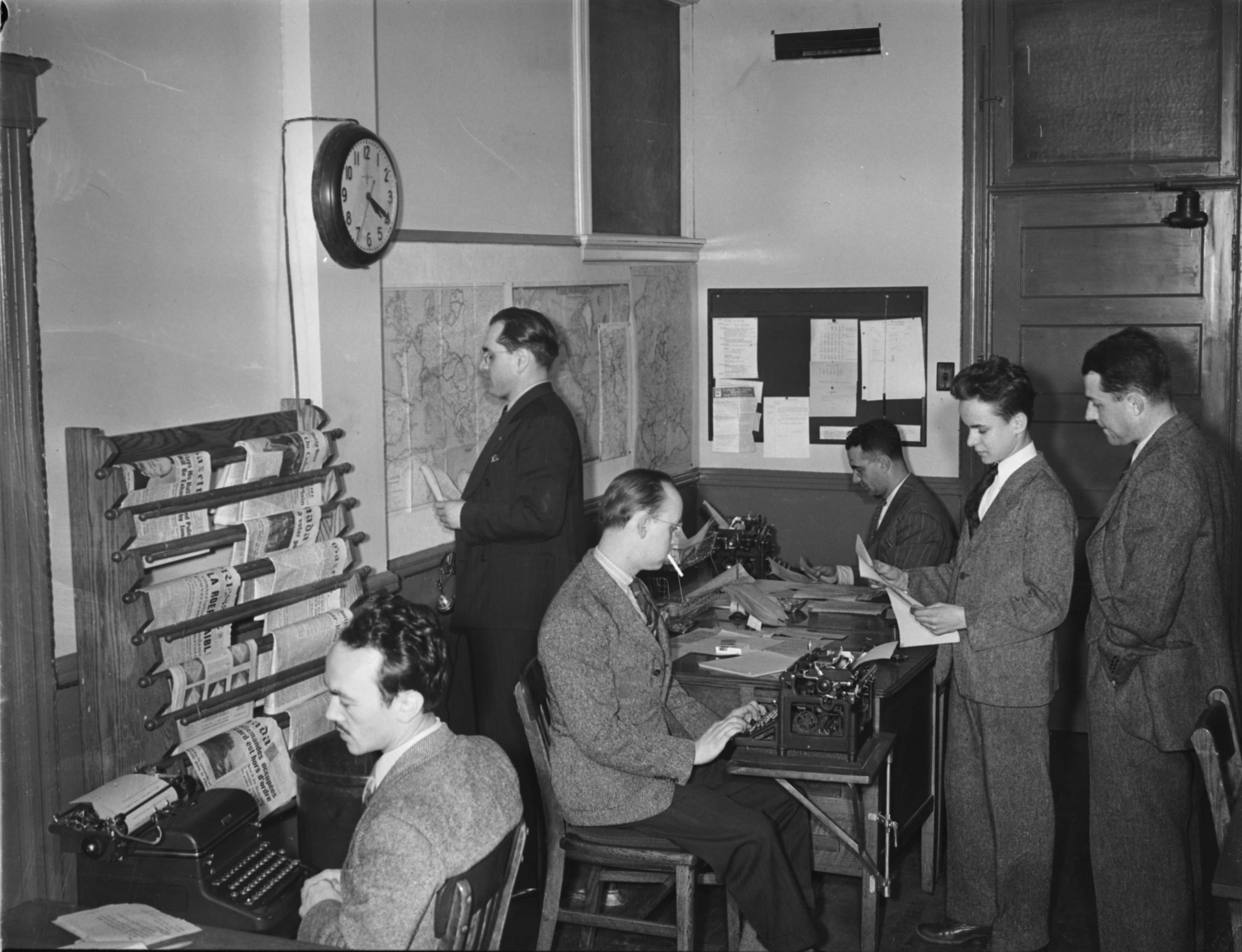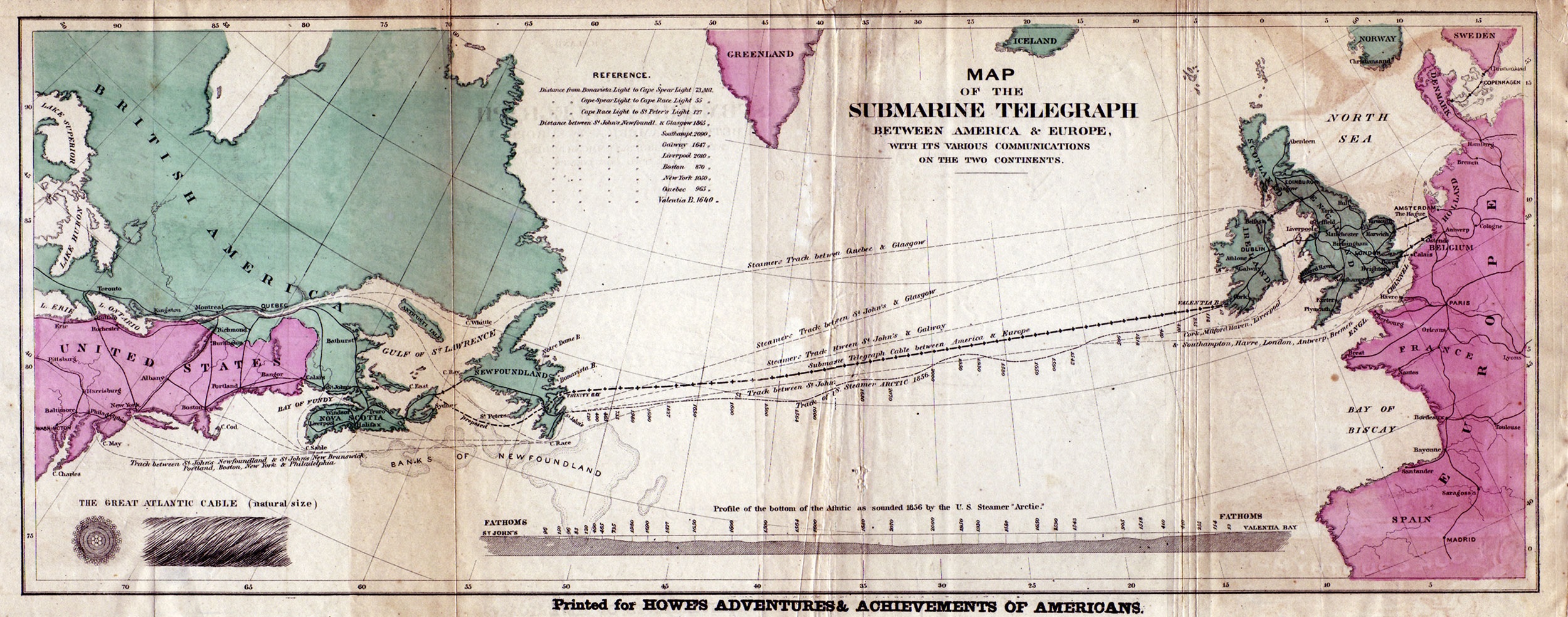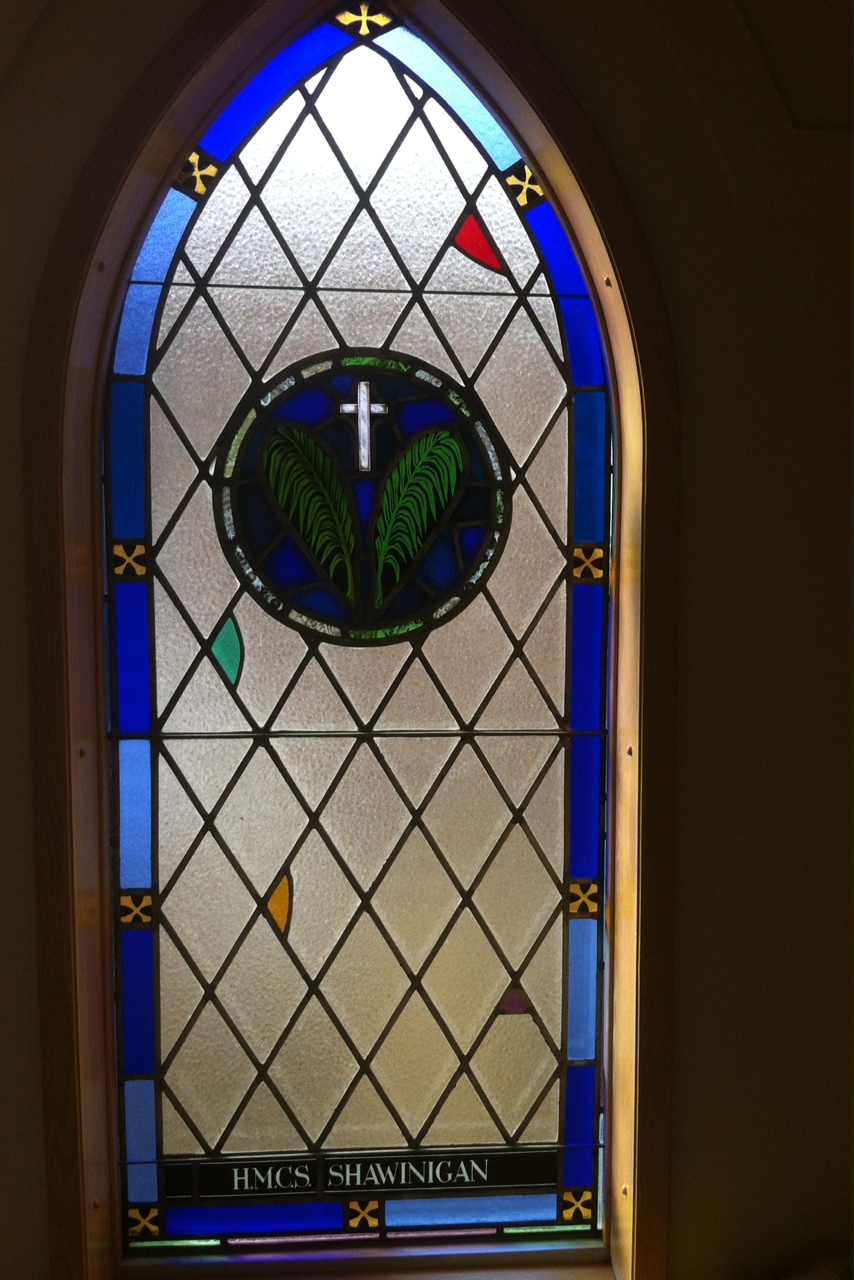|
Cabot Strait
Cabot Strait (; , ) is in Atlantic Canada between Cape Ray, Newfoundland, and Cape North, Cape Breton Island. The strait, approximately 110 kilometres wide, is the widest of the three outlets for the Gulf of Saint Lawrence into the Atlantic Ocean, the others being the Strait of Belle Isle and Strait of Canso. It is named for the Italian explorer Giovanni Caboto. Geography and geology Bathymetry The strait's bathymetry is varied, with the Laurentian Channel creating a deep trench through its centre, and comparatively shallow coastal waters closer to Newfoundland and Cape Breton Island. These bathymetric conditions have been known by mariners to cause rogue waves. The steep slope of the Laurentian Channel was the site of a disastrous submarine landslide at the southeastern end of the strait, triggered by the 1929 Grand Banks earthquake and leading to a tsunami that devastated communities along Newfoundland's south coast and parts of Cape Breton Island. St. Paul Islan ... [...More Info...] [...Related Items...] OR: [Wikipedia] [Google] [Baidu] [Amazon] |
Cape Breton Island
Cape Breton Island (, formerly '; or '; ) is a rugged and irregularly shaped island on the Atlantic coast of North America and part of the province of Nova Scotia, Canada. The island accounts for 18.7% of Nova Scotia's total area. Although the island is physically separated from the Nova Scotia peninsula by the Strait of Canso, the long Canso Causeway connects it to mainland Nova Scotia. The island is east-northeast of the mainland with its northern and western coasts fronting on the Gulf of Saint Lawrence with its western coast forming the eastern limits of the Northumberland Strait. The eastern and southern coasts front the Atlantic Ocean with its eastern coast also forming the western limits of the Cabot Strait. Its landmass slopes upward from south to north, culminating in the Cape Breton Highlands, highlands of its northern cape. A large body of saltwater, the ("Golden Arm" in French), dominates the island's centre. The total population at the 2016 Canadian Census, 20 ... [...More Info...] [...Related Items...] OR: [Wikipedia] [Google] [Baidu] [Amazon] |
Shipwreck
A shipwreck is the wreckage of a ship that is located either beached on land or sunken to the bottom of a body of water. It results from the event of ''shipwrecking'', which may be intentional or unintentional. There were approximately three million shipwrecks worldwide as of January 1999, according to Angela Croome, a science writer and author who specialized in the history of underwater archaeology (an estimate rapidly endorsed by UNESCO and other organizations). When a ship's crew has died or abandoned the ship, and the ship has remained adrift but unsunk, they are instead referred to as Ghost ship, ''ghost ships''. Types Historic wrecks are attractive to maritime archaeology, maritime archaeologists because they preserve historical information: for example, studying the wreck of revealed information about seafaring, warfare, and life in the 16th century. Military wrecks, caused by a skirmish at sea, are studied to find details about the historic event; they reveal ... [...More Info...] [...Related Items...] OR: [Wikipedia] [Google] [Baidu] [Amazon] |
Canadian Broadcasting Corporation
The Canadian Broadcasting Corporation (), branded as CBC/Radio-Canada, is the Canadian Public broadcasting, public broadcaster for both radio and television. It is a Crown corporation that serves as the national public broadcaster, with its English-language and French-language service units known as CBC and Radio-Canada, respectively. Although some local stations in Canada predate its founding, the CBC is the oldest continually-existing broadcasting network in Canada. The CBC was established on November 2, 1936. The CBC operates four terrestrial radio networks: The English-language CBC Radio One and CBC Music, and the French-language Ici Radio-Canada Première and Ici Musique (international radio service Radio Canada International historically transmitted via shortwave radio, but since 2012 its content is only available as podcasts on its website). The CBC also operates two terrestrial television networks, the English-language CBC Television and the French-language Ici Radio-C ... [...More Info...] [...Related Items...] OR: [Wikipedia] [Google] [Baidu] [Amazon] |
Newfoundland
Newfoundland and Labrador is the easternmost province of Canada, in the country's Atlantic region. The province comprises the island of Newfoundland and the continental region of Labrador, having a total size of . As of 2025 the population of Newfoundland and Labrador was estimated to be 545,579. The island of Newfoundland (and its smaller neighbouring islands) is home to around 94 per cent of the province's population, with more than half residing in the Avalon Peninsula. Labrador has a land border with both the province of Quebec, as well as a short border with the territory of Nunavut on Killiniq Island. The French overseas collectivity of Saint Pierre and Miquelon lies about west of the Burin Peninsula. According to the 2016 census, 97.0% of residents reported English as their native language, making Newfoundland and Labrador Canada's most linguistically homogeneous province. Much of the population is descended from English and Irish settlers, with the majority ... [...More Info...] [...Related Items...] OR: [Wikipedia] [Google] [Baidu] [Amazon] |
Trans Canada Microwave
Trans Canada Microwave or Trans-Canada Skyway was a microwave relay system built in the 1950s to carry telephone and television signals from Canada's east coast to its west coast. Built across the nation, the towers ranged in height from nine metres high, to one in northern Ontario that was over 100 metres high. The system included 139 towers spanning over 6,275 kilometres and cost $50 million (). History Origins Canada was among the first countries to implement telephone service using a microwave relay system, when in 1948 a link between Nova Scotia and Prince Edward Island opened with a capacity of 23 telephone lines. This was followed in 1952 by a radio system between Halifax and Saint John, New Brunswick, with 46 channels. Telephone usage grew explosively in the post-war era in Canada, and the country soon had the third largest number of telephones in the world despite its small population. More importantly, Canadians used their phones much more than any other nation, makin ... [...More Info...] [...Related Items...] OR: [Wikipedia] [Google] [Baidu] [Amazon] |
Transatlantic Telegraph Cable
Transatlantic telegraph cables were undersea cables running under the Atlantic Ocean for telegraph communications. Telegraphy is a largely obsolete form of communication, and the cables have long since been decommissioned, but telephone and data are still carried on other transatlantic telecommunications cables. The Atlantic Telegraph Company led by Cyrus West Field constructed the first transatlantic telegraph cable. The project began in 1854 with the first cable laid from Valentia Island off the west coast of Ireland to Bay of Bulls, Trinity Bay, Newfoundland. The first communications occurred on August 16, 1858, but the line speed was poor. The first official telegram to pass between two continents that day was a letter of congratulations from Queen Victoria of the United Kingdom to President of the United States James Buchanan. Signal quality declined rapidly, slowing transmission to an almost unusable speed. The cable was destroyed after three weeks when Wildman ... [...More Info...] [...Related Items...] OR: [Wikipedia] [Google] [Baidu] [Amazon] |
Submarine Telegraph Cable
A submarine communications cable is a cable laid on the seabed between land-based stations to carry telecommunication signals across stretches of ocean and sea. The first submarine communications cables were laid beginning in the 1850s and carried telegraphy traffic, establishing the first instant telecommunications links between continents, such as the first transatlantic telegraph cable which became operational on 16 August 1858. Submarine cables first connected all the world's continents (except Antarctica) when Java was connected to Darwin, Northern Territory, Australia, in 1871 in anticipation of the completion of the Australian Overland Telegraph Line in 1872 connecting to Adelaide, South Australia and thence to the rest of Australia. Subsequent generations of cables carried telephone traffic, then data communications traffic. These early cables used copper wires in their cores, but modern cables use optical fiber technology to carry digital data, which includes telep ... [...More Info...] [...Related Items...] OR: [Wikipedia] [Google] [Baidu] [Amazon] |
Ferries
A ferry is a boat or ship that transports passengers, and occasionally vehicles and cargo, across a body of water. A small passenger ferry with multiple stops, like those in Venice, Italy, is sometimes referred to as a water taxi or water bus. Ferries form a part of the public transport systems of many waterside cities and islands, allowing direct transit between points at a capital cost much lower than bridges or tunnels. Ship connections of much larger distances (such as over long distances in water bodies like the Baltic Sea) may also be called ferry services, and many carry vehicles. History The profession of the ferryman is embodied in Greek mythology in Charon, the boatman who transported souls across the River Styx to the Underworld. Speculation that a pair of oxen propelled a ship having a water wheel can be found in 4th century Roman literature "''Anonymus De Rebus Bellicis''". Though impractical, there is no reason why it could not work and such a ferry, modifie ... [...More Info...] [...Related Items...] OR: [Wikipedia] [Google] [Baidu] [Amazon] |
North Sydney, Nova Scotia
North Sydney (Mi'kmaq language, Mi'kmawi'simk: ''Kweso'mkiaq'', Scottish Gaelic: ''Suidni A Tuath'' or ''Am Bàr'') is a former town and current community in Nova Scotia's Cape Breton Regional Municipality. Located on the north side of Sydney Harbour, along the eastern coast of Cape Breton Island, North Sydney is an important port in Atlantic Canada, serving as the western terminus of the Marine Atlantic ferry service. It acts as the marine link for the Trans-Canada Highway to Newfoundland (island), Newfoundland and is often termed "The Gateway To Newfoundland" for that reason. Marine Atlantic ferries currently operate from North Sydney's terminal to the ports of Channel-Port aux Basques and Argentia. The Crown Corporation is one of the largest employers in the area. History North Sydney was settled around 1785 by European and Loyalist settlers. The original Mi'kmaq name for the area, ''Kweso'mkiaq,'' means "sandy point." It emerged as a major shipbuilding centre in th ... [...More Info...] [...Related Items...] OR: [Wikipedia] [Google] [Baidu] [Amazon] |
Channel-Port Aux Basques
Channel-Port aux Basques is a town at the extreme southwestern tip of Newfoundland fronting on the western end of the Cabot Strait. A Marine Atlantic ferry terminal is located in the town which is the primary entry point onto the island of Newfoundland and the western terminus of the Newfoundland and Labrador Route 1 (Trans-Canada Highway) in the province. The town was incorporated in 1945 and its population in the 2021 census was 3,547. Port aux Basques is the oldest of the collection of villages that make up the present-day town, which consists of Port aux Basques, Channel, Grand Bay and Mouse Island. The town is called "''Siinalk''" in the Miꞌkmaq language. History Channel was settled by fisher-folk from the Channel Islands in the early 1700s. Port aux Basques refers to the harbour that was a favoured sheltering and watering place for Basque whalers who hailed from the Basque region of Spain during the early 16th century. After leaving the harbour the whalers either ... [...More Info...] [...Related Items...] OR: [Wikipedia] [Google] [Baidu] [Amazon] |
Marine Atlantic
Marine Atlantic Inc. () is an independent Canadian federal Crown corporation which is mandated to operate ferry services between the provinces of Newfoundland and Labrador and Nova Scotia. Marine Atlantic's corporate headquarters are in St. John's, Newfoundland and Labrador. Current operations Marine Atlantic operates ferries across the Cabot Strait on two routes: * North Sydney, Nova Scotia, and Port aux Basques, Newfoundland and Labrador * North Sydney, Nova Scotia, and Argentia, Newfoundland and Labrador The Port aux Basques route is operated year-round. This service was assumed by Canadian National Railway in 1949 from the Newfoundland Railway when the Dominion of Newfoundland entered into Canadian Confederation. The Argentia, Placentia route is operated seasonally during the summer (June–September). This service was established by CNR in 1967. As a result of the 2020 COVID-19 pandemic, the Argentia, Placentia service was suspended for that year on May 8, 2020. His ... [...More Info...] [...Related Items...] OR: [Wikipedia] [Google] [Baidu] [Amazon] |
HMCS Shawinigan (K136)
HMCS ''Shawinigan'' was a that served with the Royal Canadian Navy during the Second World War. She served primarily in the Battle of the Atlantic protecting convoys. She was sunk in 1944. She was named for Shawinigan, Quebec. Background Flower-class corvettes like ''Shawinigan'' serving with the Royal Canadian Navy during the Second World War were different from earlier and more traditional sail-driven corvettes. The "corvette" designation was created by the French as a class of small warships; the Royal Navy borrowed the term for a period but discontinued its use in 1877. During the hurried preparations for war in the late 1930s, Winston Churchill reactivated the corvette class, needing a name for smaller ships used in an escort capacity, in this case based on a whaling ship design. The generic name "flower" was used to designate the class of these ships, which in the Royal Navy were named after flowering plants. Corvettes commissioned by the Royal Canadian Navy during the ... [...More Info...] [...Related Items...] OR: [Wikipedia] [Google] [Baidu] [Amazon] |








